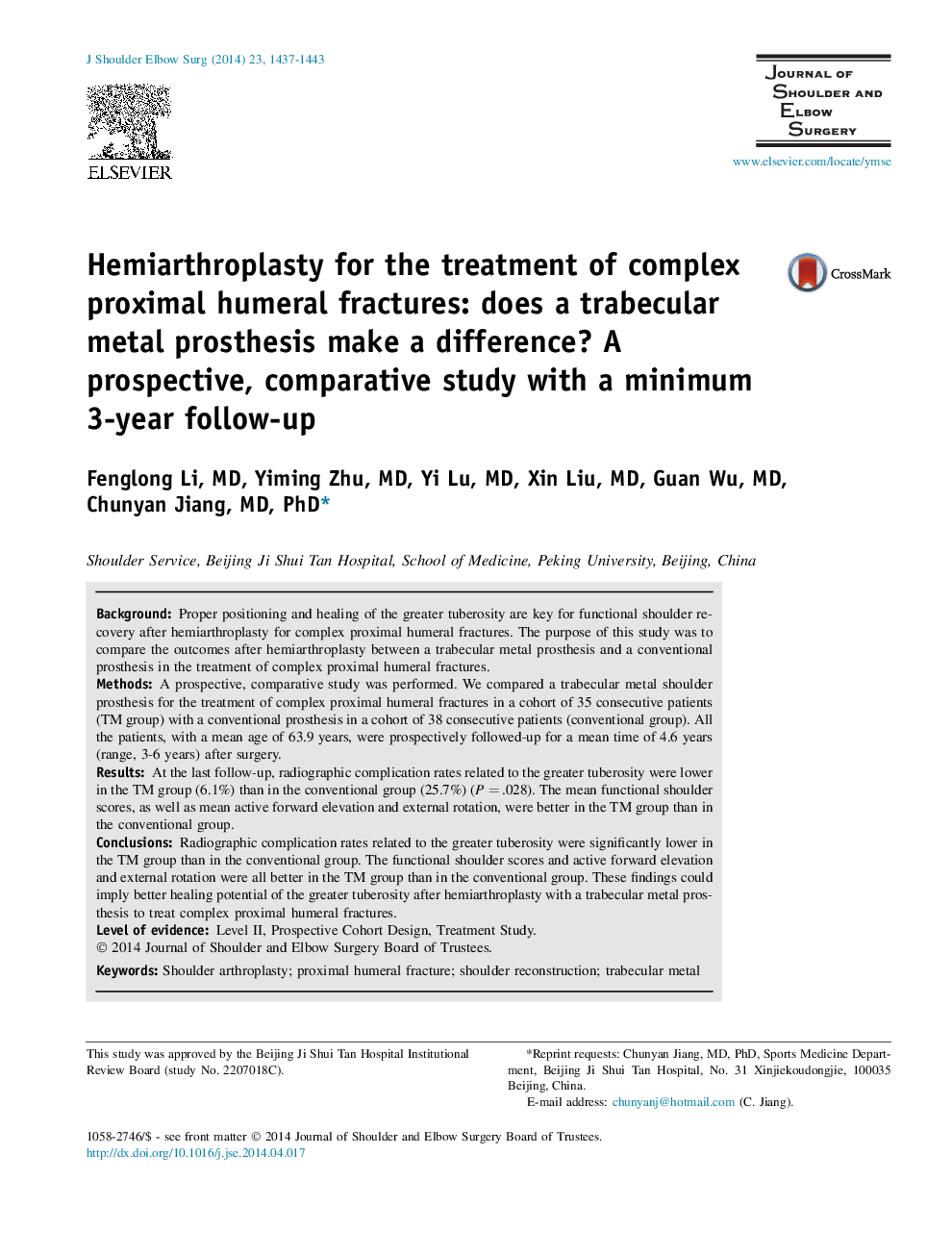| Article ID | Journal | Published Year | Pages | File Type |
|---|---|---|---|---|
| 4073763 | Journal of Shoulder and Elbow Surgery | 2014 | 7 Pages |
BackgroundProper positioning and healing of the greater tuberosity are key for functional shoulder recovery after hemiarthroplasty for complex proximal humeral fractures. The purpose of this study was to compare the outcomes after hemiarthroplasty between a trabecular metal prosthesis and a conventional prosthesis in the treatment of complex proximal humeral fractures.MethodsA prospective, comparative study was performed. We compared a trabecular metal shoulder prosthesis for the treatment of complex proximal humeral fractures in a cohort of 35 consecutive patients (TM group) with a conventional prosthesis in a cohort of 38 consecutive patients (conventional group). All the patients, with a mean age of 63.9 years, were prospectively followed-up for a mean time of 4.6 years (range, 3-6 years) after surgery.ResultsAt the last follow-up, radiographic complication rates related to the greater tuberosity were lower in the TM group (6.1%) than in the conventional group (25.7%) (P = .028). The mean functional shoulder scores, as well as mean active forward elevation and external rotation, were better in the TM group than in the conventional group.ConclusionsRadiographic complication rates related to the greater tuberosity were significantly lower in the TM group than in the conventional group. The functional shoulder scores and active forward elevation and external rotation were all better in the TM group than in the conventional group. These findings could imply better healing potential of the greater tuberosity after hemiarthroplasty with a trabecular metal prosthesis to treat complex proximal humeral fractures.
